60 Reasons to Protest: Reason #53 – What happened to the cross-runway?
With the launch of the New Parallel Runway, Brisbane Airport’s cross-runway (14/32, see photo below) was decommissioned. What happened?
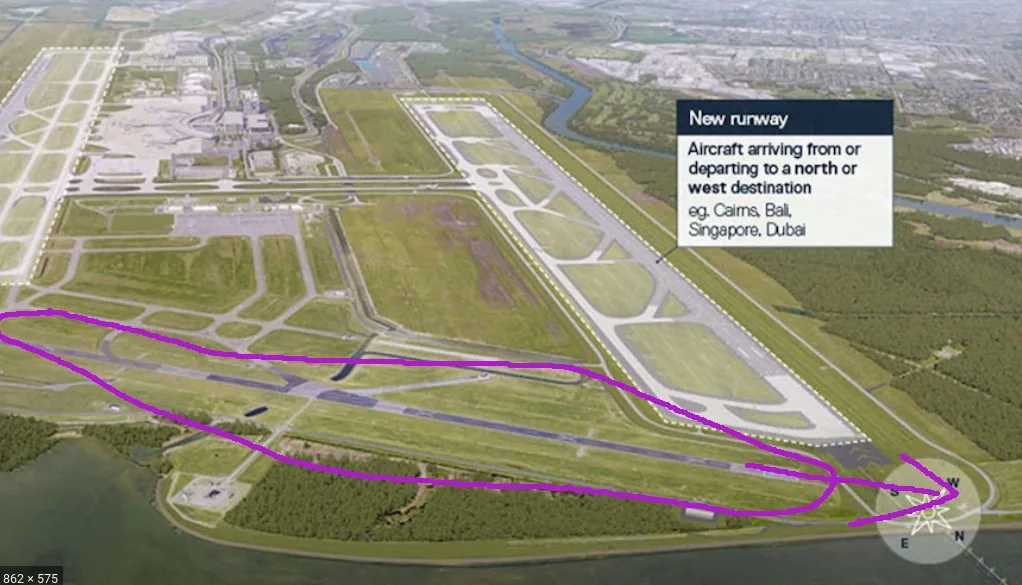
A cross-runway design can help to reduce aircraft noise pollution much better than a parallel runway design by changing the direction of takeoff and landing. By having intersecting runways, an airport can choose to use the runway that is most aligned with the prevailing wind, which can reduce the need for planes to fly over residential areas during takeoff and landing. See the below screenshot of the previous cross-runway departure flight path over water for northerly winds. We are told 8-12 aircraft per hour (even some B737s) used the cross-runway prior to its mothballing AND the ONLY reason for the cross-runway’s decommissioning was profit greed.
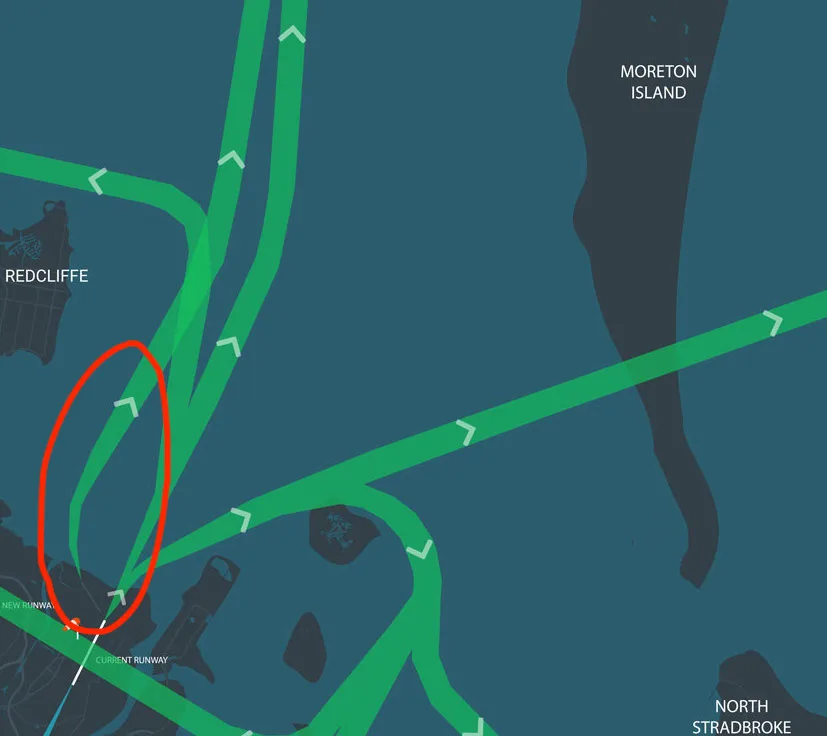
The Brisbane Airport Master Plan 2003 contained a comparison of various options. What we are stuck with now is Option 3. The extension of the cross-runway is Option 5.
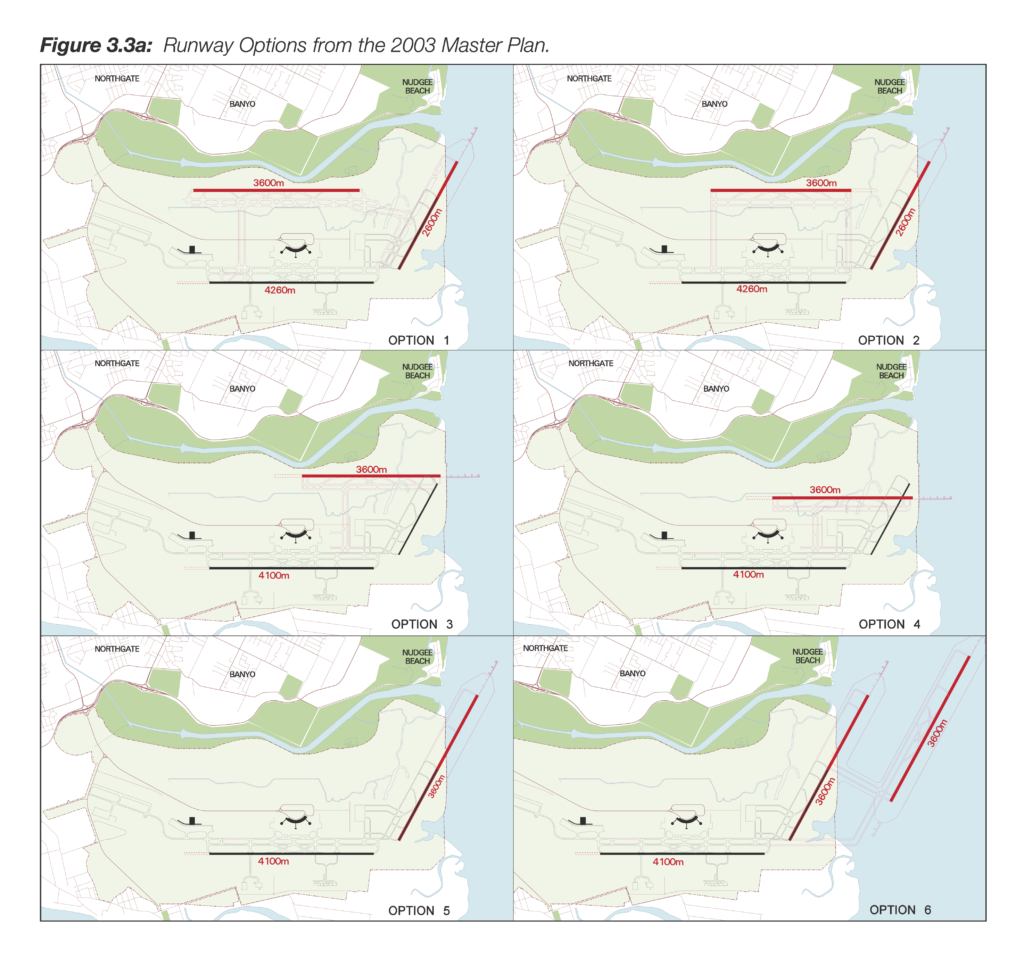
- Option 3 (parallel runway) was estimated to provide a capacity of 390,000 – 435,000 flights at a cost of $295M. It has caused a significant overall INCREASE in noise impacts for communities.
- Option 5 (cross-runway extension) was estimated to provide a capacity of 210,000 – 235,000 flights at a cost of $315M. It would have caused a significant overall REDUCTION in noise impacts for communities. Note that an area to enable the cross-runway extension is still excluded from the Moreton Bay Marine Park today (see map below).
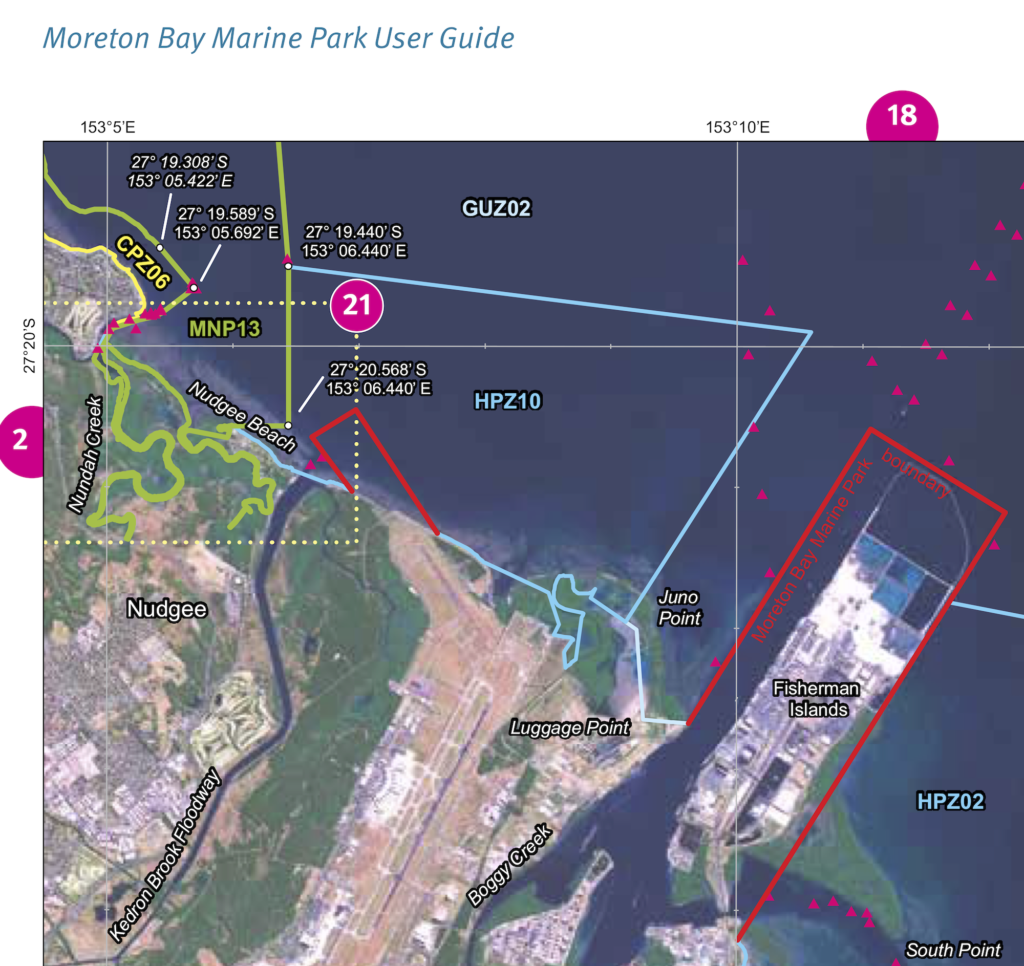
These options were then revisited in the 2007 MDP/EIS. Of course, BAC preferred Option 3: maximum throughput and profit for them and maximum noise for us.
Airservices also preferred the parallel runway, because for them it means they can operate Brisbane Airport with less ATCs and simply send all aircraft (now including turbo-props) onto automated flight paths (SIDs / STARs). They played the safety card, too, despite cross-runway designs being safely operated at Frankfurt, Amsterdam, Dallas, Beijing, London, Chicago, Paris, Dubai, San Francisco, Sydney, and many other airports.
32 years ago (and 12 years before the 2003 BAC Master Plan), Brisbane residents signed a petition, which you can find in the Hansard of the Australian Parliament. It reads:
To the Honourable the Speaker and Members of the House of Representatives Assembled in Parliament:
We, the undersigned petitioners, reject the final report of the Brisbane Airport Task Force, because it failed in its basic charter to “minimise the impact of aircraft noise on surround communities.”
It failed to recommend their own conclusions that an extended cross-runway would “significantly reduce aircraft noise” and that an extended cross-runway could operate as the “main or supplementary runway,” which, along with the Main Runway would enable 80% or more planes to go in and out over Moreton Bay, as promised.
Although it rejected these solutions because the cost would be $105 million, it recommended that a future Parallel Runway be built at a cost of $395 million (today’s price) which could escalate to double or more in 15 to 20 years, thus forcing north and southside citizens to suffer increasing aircraft noise with no end in sight.
We urgently request that money be made available for an extended cross-runway as the most cost effective and practical solution to Brisbane Airport noise and safety.
Hansard, 22 August 1991
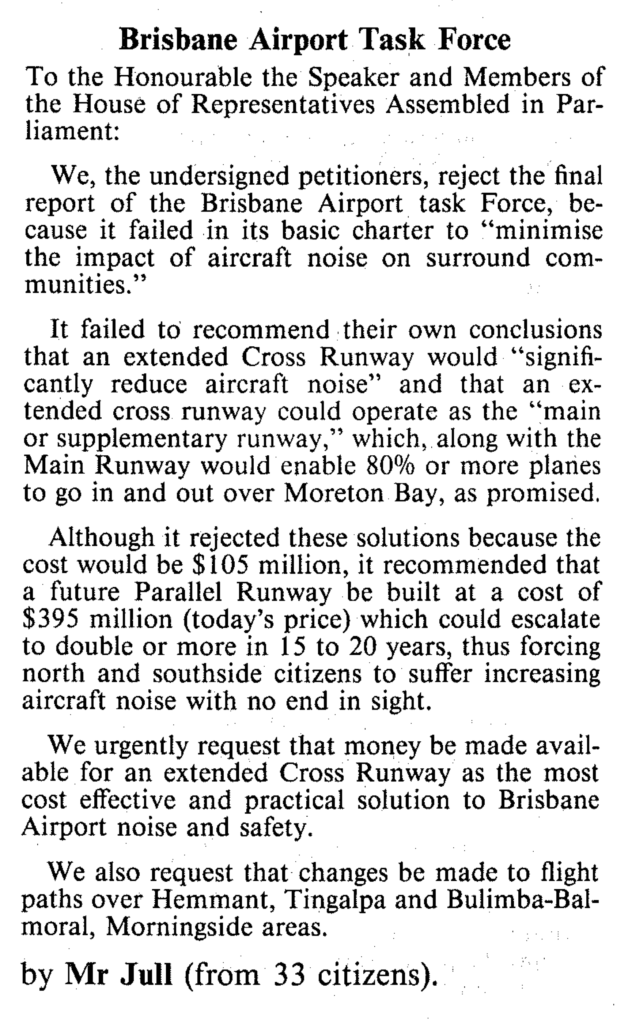

One of our fearless members on BACACG asked BAC CEO Gert-Jan de Graaff at the 30 Nov 2022 meeting:
“In view that some countries actually build runways in the ocean to get both approaches over water what was the rationale to close the cross-runway with both approaches over water?”
BAC’s answer: Crickets ![]()
![]()
![]()
![]()
![]()
![]()
What’s the cross-runway used for these days? A parking lot for planes – we kid you not.
Register for the BFPCA protest:
Discuss this in the BFPCA Facebook group:


